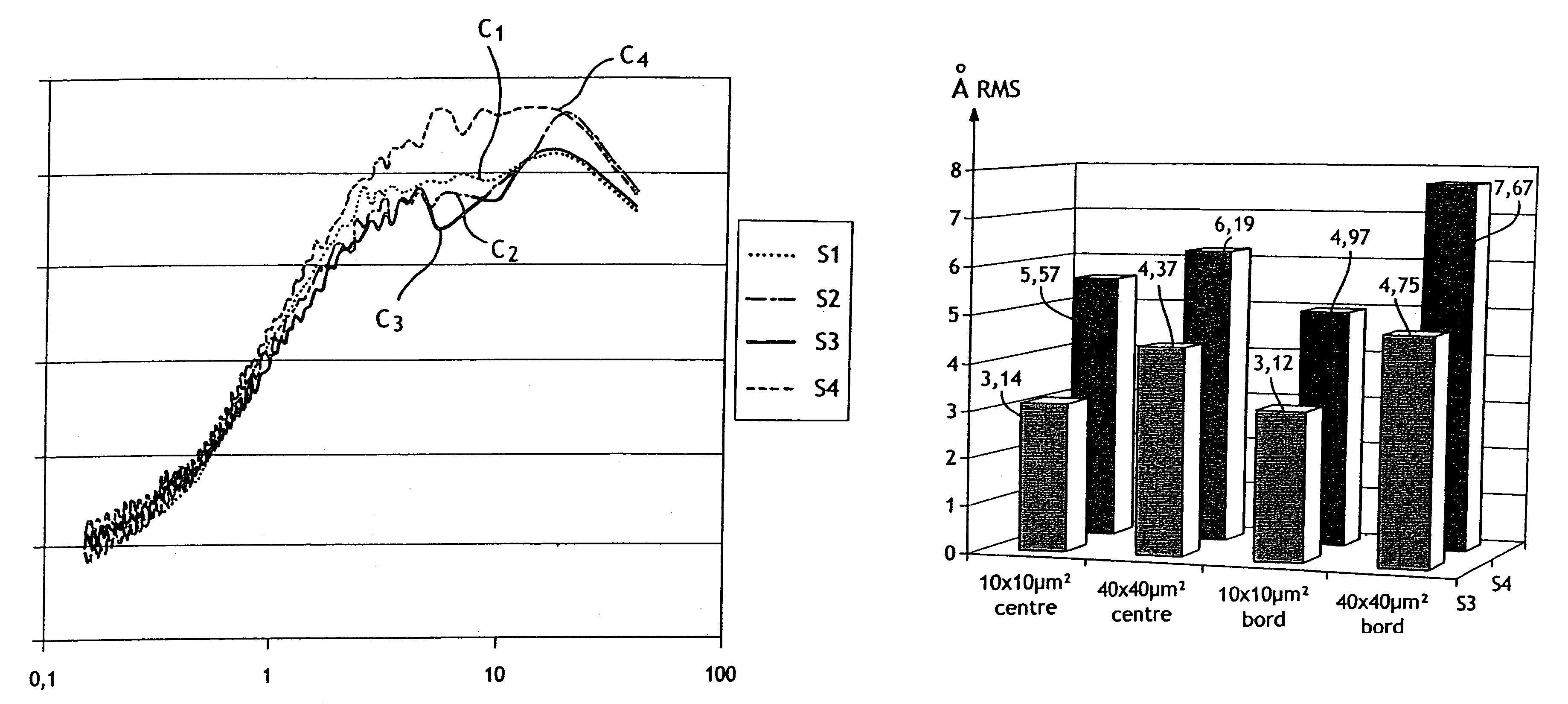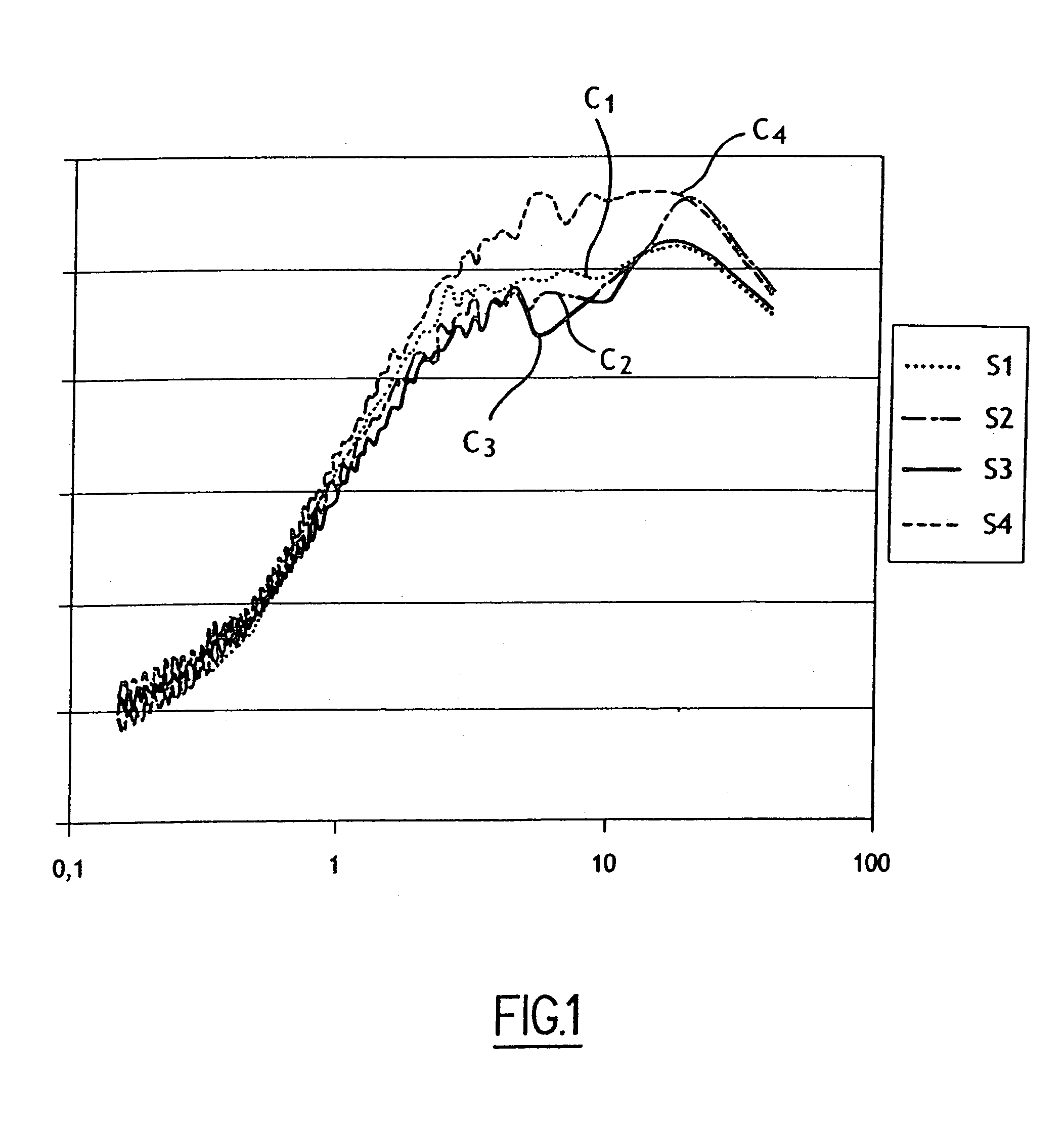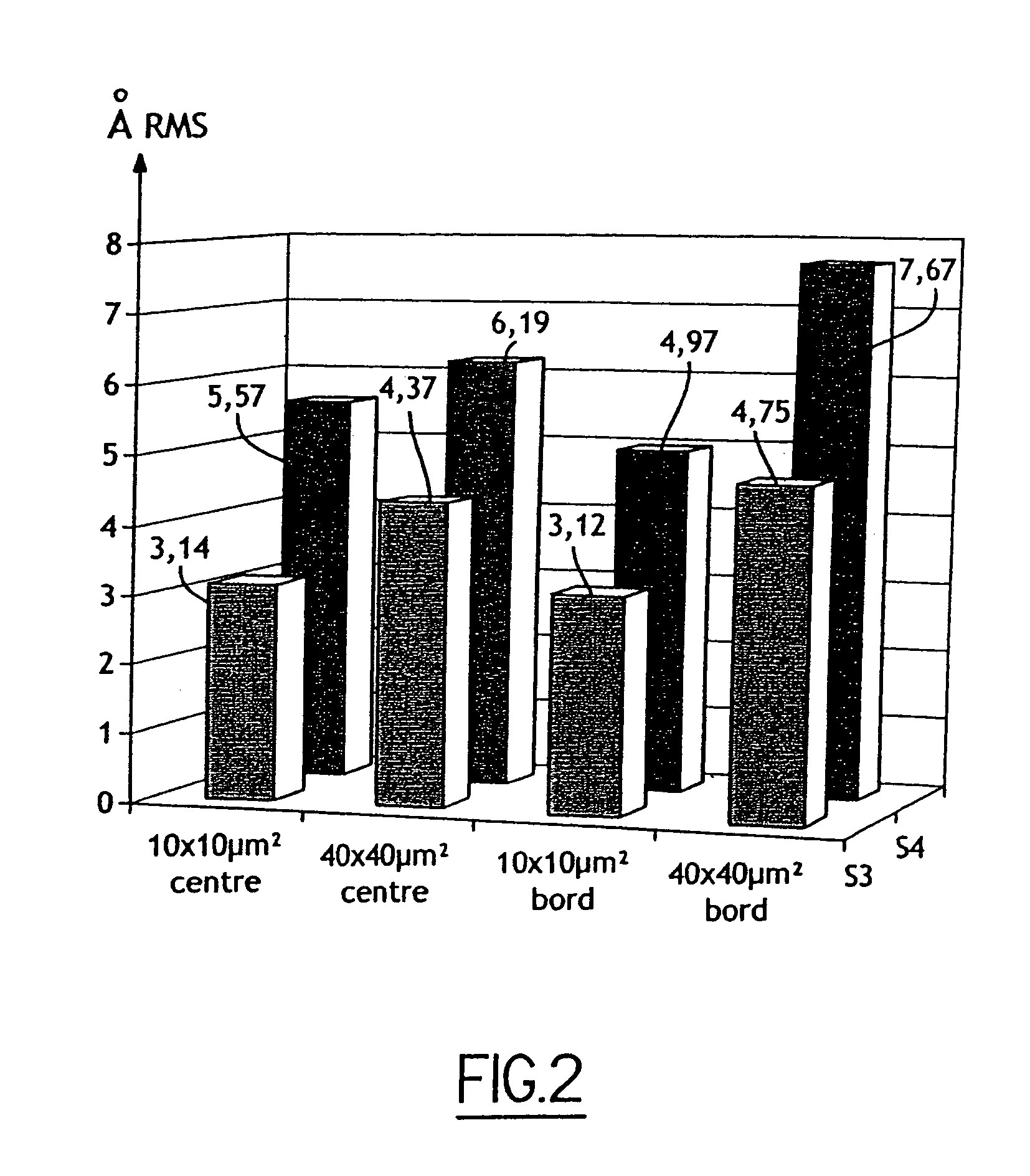Method for producing a high quality useful layer on a substrate utilizing helium and hydrogen implantations
a technology of helium and hydrogen implantation and high-quality useful layer, which is applied in the manufacturing of semiconductor/solid-state devices, basic electric elements, electric devices, etc., can solve the problems of chemical-mechanical polishing defects, cold working defects, and compromise the uniformity of the free surface of the thin layer, so as to minimize the high-frequency roughness of the surface, minimize the low-frequency roughness, and high-quality
- Summary
- Abstract
- Description
- Claims
- Application Information
AI Technical Summary
Benefits of technology
Problems solved by technology
Method used
Image
Examples
Embodiment Construction
[0023]The present process relates to the production of structures that include a thin layer of semiconductor material on a support substrate, wherein the thin layer is by detachment at the level of a donor substrate that has a weakened zone created by implantation of species. The structure can be, in general, any type of structure that includes a thin layer of a semiconductor material on a surface exposed to the external environment (a free surface). Such a thin layer of semiconductor material can be, for example, silicon Si, silicon carbide SiC, germanium Ge, silicon-germanium SiGe, gallium arsenic AsGa, etc. Further, a support substrate can be made of silicon Si, quartz, and the like. A layer of oxide can also be inserted between the support substrate and the thin layer, such that the structure that is formed is a semiconductor-on-insulator structure (such as a SeOI structure), and in particular a silicon-on-insulator (SOI) structure, for example).
[0024]The invention can advantage...
PUM
| Property | Measurement | Unit |
|---|---|---|
| temperature | aaaaa | aaaaa |
| temperature | aaaaa | aaaaa |
| temperature | aaaaa | aaaaa |
Abstract
Description
Claims
Application Information
 Login to View More
Login to View More - R&D
- Intellectual Property
- Life Sciences
- Materials
- Tech Scout
- Unparalleled Data Quality
- Higher Quality Content
- 60% Fewer Hallucinations
Browse by: Latest US Patents, China's latest patents, Technical Efficacy Thesaurus, Application Domain, Technology Topic, Popular Technical Reports.
© 2025 PatSnap. All rights reserved.Legal|Privacy policy|Modern Slavery Act Transparency Statement|Sitemap|About US| Contact US: help@patsnap.com



